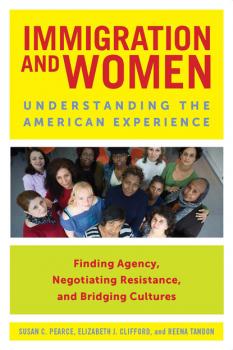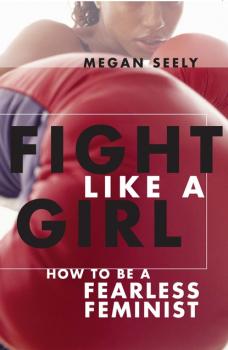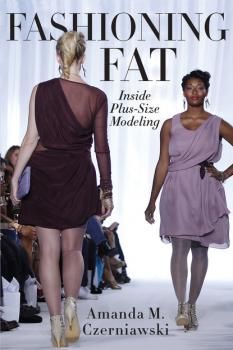ТОП просматриваемых книг сайта:
Управление, подбор персонала
Различные книги в жанре Управление, подбор персонала, доступные для чтения и скачиванияАннотация
From the clamshell razors and homemade lye depilatories used in colonial America to the diode lasers and prescription pharmaceuticals available today, Americans have used a staggering array of tools to remove hair deemed unsightly, unnatural, or excessive. This is true especially for women and girls; conservative estimates indicate that 99% of American women have tried hair removal, and at least 85% regularly remove hair from their faces, armpits, legs, and bikini lines. How and when does hair become a problem—what makes some growth “excessive”? Who or what separates the necessary from the superfluous? In Plucked, historian Rebecca Herzig addresses these questions about hair removal. She shows how, over time, dominant American beliefs about visible hair changed: where once elective hair removal was considered a “mutilation” practiced primarily by “savage” men, by the turn of the twentieth century, hair-free faces and limbs were expected for women. Visible hair growth—particularly on young, white women—came to be perceived as a sign of political extremism, sexual deviance, or mental illness. By the turn of the twenty-first century, more and more Americans were waxing, threading, shaving, or lasering themselves smooth. Herzig’s extraordinary account also reveals some of the collateral damages of the intensifying pursuit of hair-free skin. Moving beyond the experiences of particular patients or clients, Herzig describes the surprising histories of race, science, industry, and medicine behind today's hair-removing tools. Plucked is an unsettling, gripping, and original tale of the lengths to which Americans will go to remove hair.
Информация о книге
Автор произведения Rebecca M. Herzig
Жанр Управление, подбор персонала
Серия Biopolitics
Аннотация
The meaning and significance of the institution of marriage has engendered angry and boisterous battles across the United States. While the efforts of lesbians and gay men to make marriage accessible to same-sex couples have seen increasing success, these initiatives have sparked a backlash as campaigns are waged to “protect” heterosexual marriage in America. Less in the public eye is government legislation that embraces the idea of marriage promotion as a necessary societal good. In this timely and extensive study of marriage politics, Melanie Heath uncovers broad cultural anxieties that fuel on-the-ground practices to reinforce a boundary of heterosexual marriage, questioning why marriage has become an issue of pervasive national preoccupation and anxiety, and explores the impact of policies that seek to reinstitutionalize heterosexual marriage in American society. From marriage workshops for the general public to relationship classes for welfare recipients to marriage education in high school classrooms, One Marriage Under God documents in meticulous detail the inner workings of ideologies of gender and heterosexuality in the practice of marriage promotion to fortify a concept of “one marriage,” an Anglo-American ideal of Christian, heterosexual monogamy.
Информация о книге
Автор произведения Melanie Heath
Жанр Управление, подбор персонала
Серия Intersections
Аннотация
Though American crime novels are often derided for containing misogynistic attitudes and limiting ideas of masculinity, Greg Forter maintains that they are instead psychologically complex and sophisticated works that demand closer attention. Eschewing the synthetic methodologies of earlier work on crime fiction, Murdering Masculinities argues that the crime novel does not provide a consolidated and stable notion of masculinity. Rather, it demands that male readers take responsibility for the desires they project on to these novels. Forter examines the narrative strategies of five novels–Hammett's The Glass Key , Cain's Serenade , Faulkner's Sanctuary , Thompson's Pop. 1280 , and Himes's Blind Man with a Pistol –in conjunction with their treatment of bodily metaphors of smell, vision, and voice. In the process, Forter unearths a «generic unconscious» that reveals things Freud both discovered and sought to repress.
Информация о книге
Автор произведения Gregory Forter
Жанр Управление, подбор персонала
Серия Sexual Cultures
Аннотация
Looks can be deceiving, and in a society where one's status and access to opportunity are largely attendant on physical appearance, the issue of how difference is constructed and interpreted, embraced or effaced, is of tremendous import. Lisa Walker examines this issue with a focus on the questions of what it means to look like a lesbian, and what it means to be a lesbian but not to look like one. She analyzes the historical production of the lesbian body as marked, and studies how lesbians have used the frequent analogy between racial difference and sexual orientation to craft, emphasize, or deny physical difference. In particular, she explores the implications of a predominantly visible model of sexual identity for the feminine lesbian, who is both marked and unmarked, desired and disavowed. Walker's textual analysis cuts across a variety of genres, including modernist fiction such as The Well of Loneliness and Wide Sargasso Sea, pulp fiction of the Harlem Renaissance, the 1950s and the 1960s, post-modern literature as Michelle Cliff's Abeng, and queer theory. In the book's final chapter, «How to Recognize a Lesbian,» Walker argues that strategies of visibility are at times deconstructed, at times reinscribed within contemporary lesbian-feminist theory.
Аннотация
What role does theory play in academia today? How can feminist theory be made more relevant to the very real struggles undertaken by women of all professions, races, and sexual orientation? How can it be directed into more effective social activism, and how is theory itself a form of practice? Feminist theory and political activism need not—indeed cannot—be distinct and alienated from one another. To reconcile the gulf between word and deed, scholar-activists from a broad range of disciplines have come together here to explore the ways in which practice and theory intersect and interact. The authors argue against overly abstract and esoteric theorizing that fails its own tests of responsible political practice and suggest alternative methods by which to understand feminist issues and attain feminist goals. They also examine the current state of affairs in the academy, exposing the ways in which universities systematically reinforce social hierarchies and offering important and intelligent suggestions for curricular and structural changes. Is Academic Feminism Dead? marks a significant step forward in relating academic and social movement feminism. It recognizes and examines the diverse realities experienced by women, as well as the changing political, cultural, and economic realities shaping contemporary feminism.
Аннотация
The popular debate around contemporary U.S. immigration tends to conjure images of men waiting on the side of the road for construction jobs, working in kitchens or delis, driving taxis, and sending money to their wives and families in their home countries, while women are often left out of these pictures. Immigration and Women is a national portrait of immigrant women who live in the United States today, featuring the voices of these women as they describe their contributions to work, culture, and activism.Through an examination of U.S. Census data and interviews with women across nationalities, we hear the poignant, humorous, hopeful, and defiant words of these women as they describe the often confusing terrain where they are starting new lives, creating architecture firms, building urban high-rises, caring for children, cleaning offices, producing creative works, and organizing for social change. Highlighting the gendered quality of the immigration process, Immigration and Women interrogates how human agency and societal structures interact within the intersecting social locations of gender and migration. The authors recommend changes for public policy to address the constraints these women face, insisting that new policy must be attentive to the diverse profile of today’s immigrating woman: she is both potentially vulnerable to exploitative conditions and forging new avenues of societal leadership.
Аннотация
Listen to her NPR InterviewThe Sociology of «Hooking Up»: Author Interview on Inside Higher EdNewsweek: Campus Sexperts –>Hookup culture creates unfamiliar environment – to parents, at leastHooking Up: What Educators Need to Know – An op-ed on CHE by the authorIt happens every weekend: In a haze of hormones and alcohol, groups of male and female college students meet at a frat party, a bar, or hanging out in a dorm room, and then hook up for an evening of sex first, questions later. As casually as the sexual encounter begins, so it often ends with no strings attached; after all, it was “just a hook up.” While a hook up might mean anything from kissing to oral sex to going all the way, the lack of commitment is paramount. Hooking Up is an intimate look at how and why college students get together, what hooking up means to them, and why it has replaced dating on college campuses. In surprisingly frank interviews, students reveal the circumstances that have led to the rise of the booty call and the death of dinner-and-a-movie. Whether it is an expression of postfeminist independence or a form of youthful rebellion, hooking up has become the only game in town on many campuses.In Hooking Up , Kathleen A. Bogle argues that college life itself promotes casual relationships among students on campus. The book sheds light on everything from the differences in what young men and women want from a hook up to why freshmen girls are more likely to hook up than their upper-class sisters and the effects this period has on the sexual and romantic relationships of both men and women after college. Importantly, she shows us that the standards for young men and women are not as different as they used to be, as women talk about “friends with benefits” and “one and done” hook ups.Breaking through many misconceptions about casual sex on college campuses, Hooking Up is the first book to understand the new sexual culture on its own terms, with vivid real-life stories of young men and women as they navigate the newest sexual revolution.
Информация о книге
Автор произведения Kathleen A. Bogle
Жанр Управление, подбор персонала
Серия (none)
Аннотация
Visit Paula Kamen's website at http://www.paulakamen.com Three decades after the Sexual Revolution, women's power and status have begun to match men's, and women are finally making the rules in order to experience a more radical and truer form of liberation. Her Way demonstrates how and why 20- and 30-something women have evolved to act and think more like men sexually, while also creating their own distinct sexual patterns and appetites. Today's young women are now the leaders of an unreported but sweeping «Sexual Evolution,» in which women take control of sex and redefine it from their perspective. In other words, do it «her way.» Paula Kamen characterizes this Sexual Evolution according to two major developments that are setting sexual patterns for future generations of women: young women's sexual profiles are now remarkably similar to those of men, in terms of age of first intercourse, and numbers of sex partners and casual encounters. They also feel less guilt or shame about their behavior, from premarital sex to having a child out of marriage to coming out of the closet to cohabiting. Yet young women are not merely imitating men, but forging their own distinct sexual perspectives and asserting their own needs. In addition to discovering the pleasures of sex, young women are also exploring the dilemmas, challenging male-defined sexual scripts, and changing what actually goes on in bed. Based on more than one hundred lively, unfiltered and in-depth interviews with women across the country, Her Way cuts through the sensationalism and speculation of popular discussions about young women and sex. Kamen reports the real story of today's enhanced sexual expectations and choices.
Аннотация
View the Author's website! Seely, the youngest elected president of California's chapter of the National Organization for Women, combines her own story of third-wave feminism with an overview of the feminist movement and words to guide others. Third-wave feminists are aware of both the victories won by earlier feminists and the problems of class, race, sexual orientation, and internationalism that must still be overcome. This book weaves a deep respect for the foremothers with commonsense discussion of current obstacles and suggestions for direct action, resulting in a work that reminds us of what too many activists forget-every progressive movement has a long history, few organizing tricks are new, and problems must be understood before they can be solved. Seely includes booklists, time lines, web sites, and how-to tips that will help readers over the bridge from her insights to real world activism. For midsize to larger public libraries, academic libraries, and all feminist collections.— Library Journal "Want to know what it means to be a feminist of the third wave? Megan Seely's Fight Like a Girl is the answer; there’s enough information here to make you angry and enough resources to make you an effective activist.—Jennifer Baumgardner and Amy Richards, co-authors of Manifesta: Young Women, Feminism and the Future “Always engaging, interesting, and insightful. Fascinating and sure to engage many young women!” —Sherrie A. Inness, editor of Action Chicks “The resources, helpful hints about organizing and working with the press, the short bios of companies and fabulous feminists are great!” —Caryn Aviv, co-editor of American Queer, Then and Now Fight Like a Girl is packed with both information and inspiration for young women by a young woman who knows her stuff. It's a terrific practical feminist resource book with an optimistic attitude that says in clear language, “You're in charge of your life and here's how to stay that way”. —Gloria Feldt, former president, Planned Parenthood Federation of America and author of The War on Choice: The Right-Wing Attack on Women's Rights and How to Fight Back Fight Like a Girl offers a fearless vision for the future of feminism. By boldly detailing what is at stake for women and girls today, Megan Seely outlines the necessary steps to achieve true political, social and economic equity for all. Reclaiming feminism for a new generation, Fight Like a Girl speaks to young women who embrace feminism in substance but not necessarily in name. With an eye toward what it takes to create actual change, Seely offers a practical guide for how to get involved, take action and wage successful events and campaigns. The book is full of valuable resources for novice and committed activists alike, including such features as “How to Write a Press Release,” “Guidelines to a Good Media Interview,” “A Feminist Shopping Guide,” and a list of over 100 Fabulous Feminist Resources, including organizations, websites, and events to attend. Each chapter is full of ideas, both big and small, for ways to get involved, get active, and make a difference. Exploring such issues as body image and self-acceptance, education and empowerment, health and sexuality, political representation, economic justice, and violence against women, Fight Like a Girl looks at the challenges that women and girls face while emphasizing the strength that they independently, and collectively, embody. Seely delves into the politics of the feminist movement, exploring both women's history and current–day realities with easy-to-follow lists and timelines like those on “Women Who Made a Difference,” “Chronology of the U.S. Women's Movement,” and “Do's and Don'ts for Young Feminists.” A Third Wave manifesto as well as an introduction to feminism for a new generation, Fight Like A Girl is a powerful blueprint for young women today.
Аннотация
For two and a half years, Amanda Czerniawski was asociologist turned plus-size model. Journeying into a world where, as a size10, she was not considered an average body type, but rather, for the fashionindustry, “plus-sized,” Czerniawski studied the standards of work and imageproduction in the plus-sized model industry.Fashioning Fat takes us through a model’s day-to-day activities,first at open calls at modeling agencies and then through the fashion shows andphoto shoots. Czerniawski also interviewed 35 plus-size models about theirlives in the world of fashion, bringing to life the strange contradictions ofbeing an object of non-idealized beauty. Fashioning Fat showsus that the mission of many of these models is to challenge our standards ofbeauty that privilege the thin body; they show us that fat can be sexy. Many plus-sizemodels do often succeed in overcoming years of self-loathing and shame overtheir bodies, yet, as Czerniawski shows, these women are not the ones in chargeof beauty’s construction or dissemination. At the corporate level, the fashionindustry perpetuates their objectification. Plus-size models must conform to animage created by fashion’s tastemakers, as their bodies must fit withinnarrowly defined parameters of size and shape—an experience not too differentfrom that of straight-sized models. Ultimately, plus-size models find that theyare still molding their bodies to fit an image instead of molding an image ofbeauty to fit their bodies. A much-needed behind-the-scenes look at thisgrowing industry, Fashioning Fat is afascinating, unique, and important contribution to our understanding of beauty.










